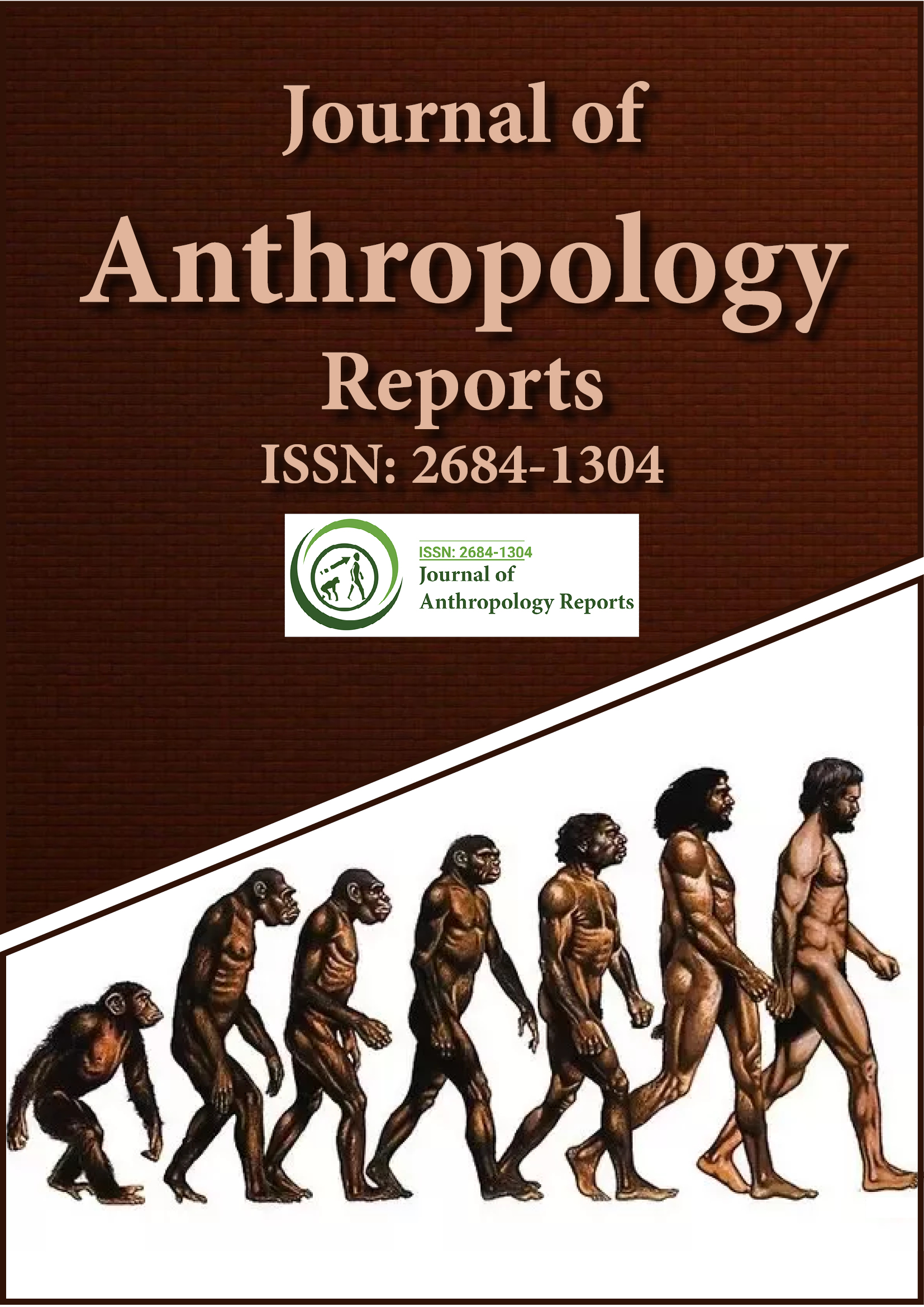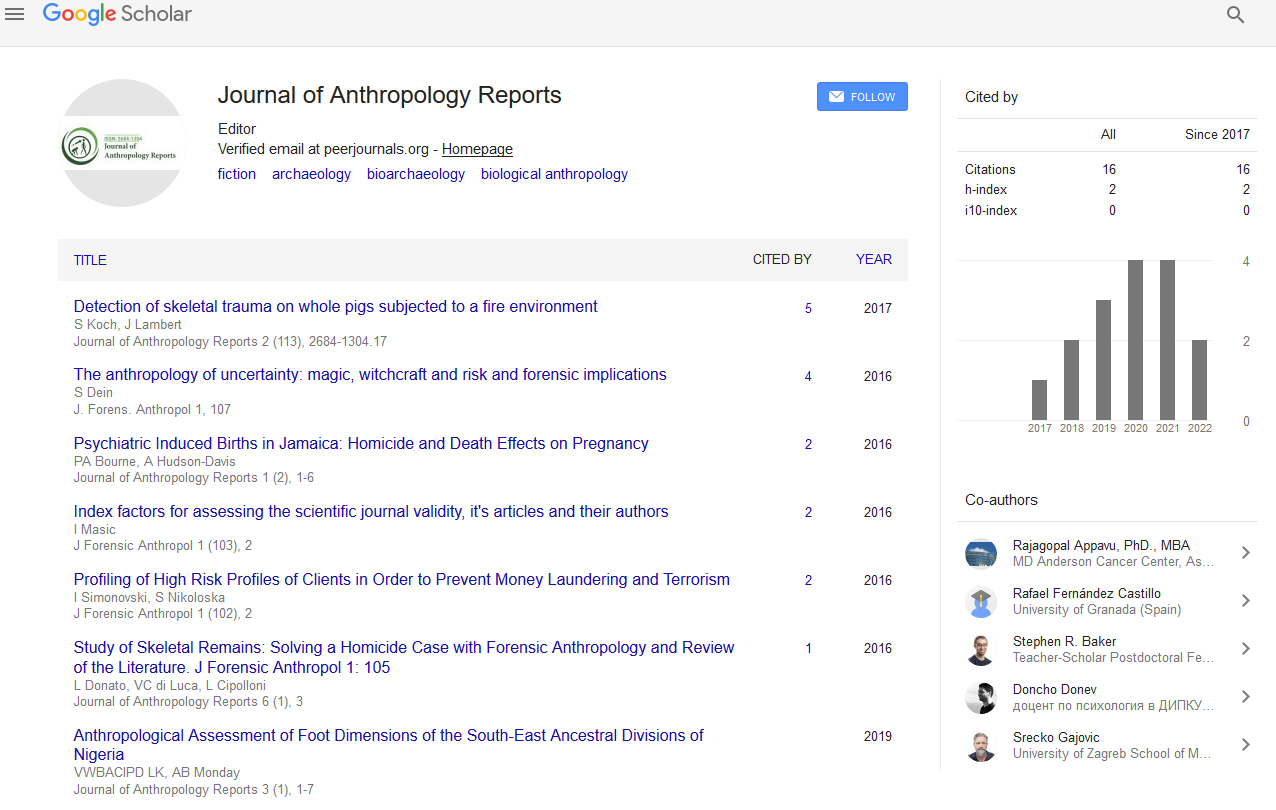Indexed In
- RefSeek
- Hamdard University
- EBSCO A-Z
Useful Links
Share This Page
Journal Flyer

Open Access Journals
- Agri and Aquaculture
- Biochemistry
- Bioinformatics & Systems Biology
- Business & Management
- Chemistry
- Clinical Sciences
- Engineering
- Food & Nutrition
- General Science
- Genetics & Molecular Biology
- Immunology & Microbiology
- Medical Sciences
- Neuroscience & Psychology
- Nursing & Health Care
- Pharmaceutical Sciences
Opinion Article - (2023) Volume 6, Issue 4
Ethnography: Data Collection Methods and Triangulation
Emma Meldgaard*Received: 29-Nov-2023, Manuscript No. JFA-24-24562; Editor assigned: 01-Dec-2023, Pre QC No. JFA-24-24562 (PQ); Reviewed: 15-Dec-2023, QC No. JFA-24-24562 (QC); Revised: 22-Dec-2023, Manuscript No. JFA-24-24562 (R); Published: 29-Dec-2023, DOI: 10.35248/2684-1304.23.6.180
Description
Ethnography is a qualitative data collection method often used in the social and behavioural sciences. Data is collected through observations and interviews, from which conclusions are drawn about the functioning of societies and individuals. Ethnographers observe life as it happens, rather than trying to manipulate it in a laboratory. Because of the unpredictability of life, ethnographers often find it difficult to nail down a table-reviewed protocol for their project. However, the board needs a good report to approve the study. Helping the board of trustees understand the parameters of the study, the circumstances in which participants will be contacted and engaged, and the risks involved will allow them to approve studies where flexibility is necessary.
Ethnography has its roots in social anthropology and especially in the work of Malinowski. Argonauts of the Western Pacific describe their long-term experience with the South Pacific Islanders and recommend that an anthropologist spend at least a year in the field, learn the language and live as one of the population being studied. Sociology took over in the 1930s when the Chicago School studied "deviant subcultures" In an American city during the Great Depression. Early ethnographers were criticized for their detached attitude, especially by feminist anthropologists, but recent adaptations of the method use it in combat research, where the researcher himself participates in the emergence of meaning and significance.
Most ethnographic studies make considerable use of participant observation, usually through triangular interviews and/or standard "informal" discussions:
• Written documents such as e-mails, policy documents, minutes of meetings, organizational charts, reports, procedures "official" corporate materials such as intranet, brochures, press releases, advertisements, websites, annual report.
• Corporate events such as annual staff conferences and Christmas parties, etc.
• Branding–logo and its uses, slogan, etc. Branding is a particularly powerful symbol.
• Object location, built environment, arrangement, etc.
Participant observation is one of the most important ethnographic data collection methods. The essence of participant observation is that you, the researcher, observe the research object, either directly participating in the activity, as a member of the studied population, or as a "pure" observer, when you are not participating in the action but are still present, such as observing workers in a factory or discussion tables in a conference room. In both cases, you observe, observe, record, describe, analyse and interpret people and their interactions and related events with the aim of obtaining a systematic description of the behaviour and ideational systems of a given community, organization or institution. Like other ethnographic methods, participant observation is largely based on the classic methods used by Malinowski and others in early anthropology when they studied specific populations, often for years, taking detailed notes. Participant observation is usually inductive and is conducted as part of an exploratory research phase that aims to generate hypotheses from the data. It is often associated with the method of grounded theory, whereby researchers return to the research field with ever-increasing knowledge. The strength of participant observation is its ability to describe in depth (thick description) and help understand human behaviour.
Advantages
• It can provide very rich information and can be particularly good at revealing aspects of human behaviour.
• It does not depend on the actors' own words, so it does not depend on people and their ability to express themselves, and it provides a source other than their own testimony.
• Problems of time and research objectivity can be solved by careful sampling, where observation is limited to specific places and times.
• All research methods have built-in bias problems: For example, the interviewing effect and the difficulty of creating careful survey questions.
Disadvantages
• Since the researcher is an instrument, it can be difficult to maintain the necessary objectivity.
• Good participant observation requires a lot of time.
• It requires intimacy and invasion of privacy, which can disrupt both the research process and the organization itself. On the other hand, hiding one's identity is ethically questionable because it involves deception.
• Observer bias: The observer's own opinions and personal beliefs can influence observations.
• However, the best way to use participant observation usefully and responsibly is to triangulate it with other approaches.
Citation: Meldgaard E (2023) Ethnography: Data Collection Methods and Triangulation. J Anthropol Rep. 6:180.
Copyright: © 2023 Meldgaard E. This is an open-access article distributed under the terms of the Creative Commons Attribution License, which permits unrestricted use, distribution, and reproduction in any medium, provided the original author and source are credited.

